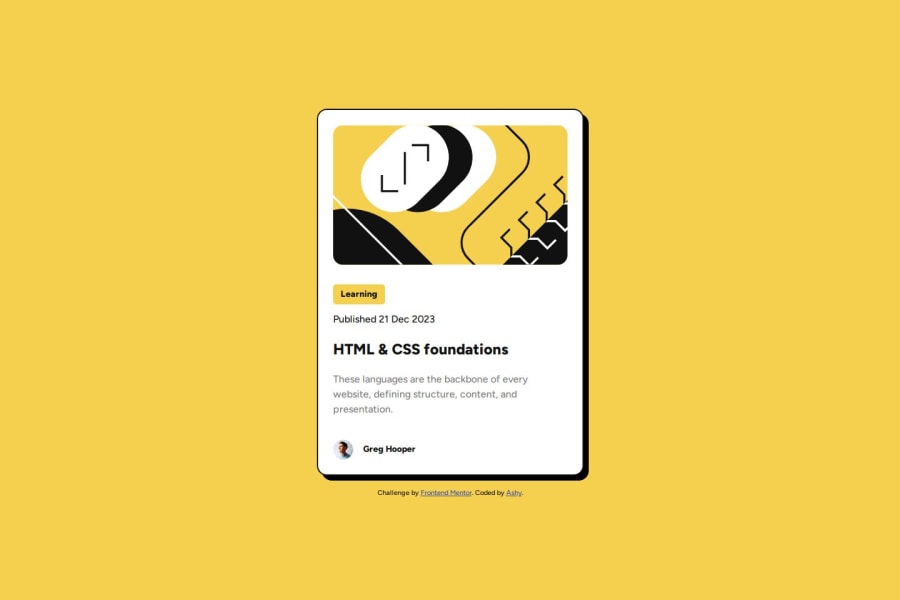
Design comparison
Solution retrospective
Going into this project, I felt more confident as the previous project was similar. This one ran a bit more smoothly, but I had to be super careful about my div styles. The figma file really helped!
What challenges did you encounter, and how did you overcome them?My biggest challenge was the padding, with multiple div's and styles. The way I overcame this challenge was using the inspector tool to see which parts of my CSS are influencing each style inside each div.
What specific areas of your project would you like help with?I'd love to know if there are any areas I could optimize my CSS. I feel some of my styles could be assigned to the body variable. I'd also like to know if there's another more optimized way of coding this card.
Community feedback
Please log in to post a comment
Log in with GitHubJoin our Discord community
Join thousands of Frontend Mentor community members taking the challenges, sharing resources, helping each other, and chatting about all things front-end!
Join our Discord
